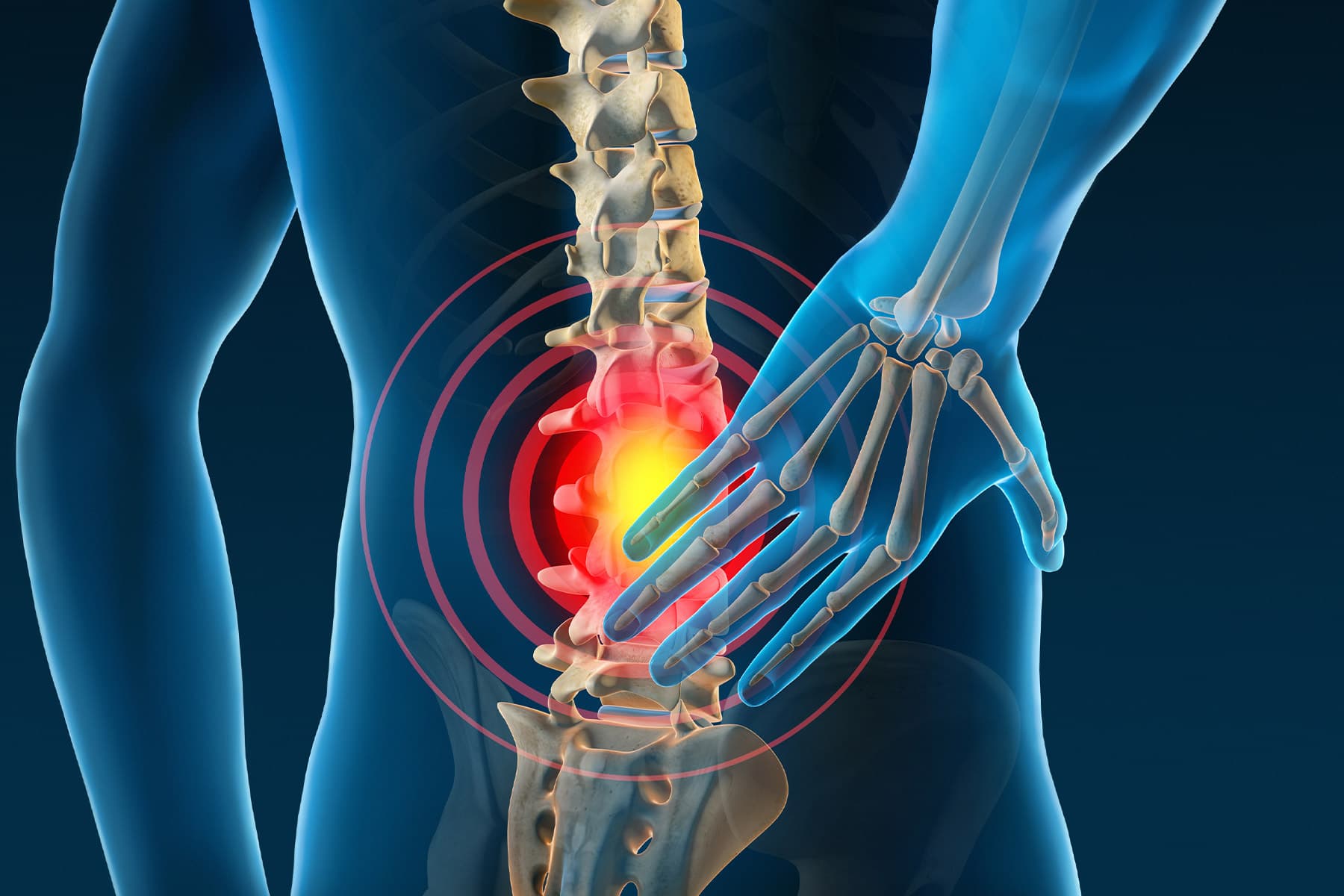- Home
- Low Back Ache
Low Back Ache
Low Back Ache
There are a wide range of back pain causes. They include acute conditions like a common muscle strain or chronic, more serious issues like scoliosis or even cancer. Getting back pain relief starts with figuring out which cause is at play so treatment can be tailored accordingly.
Many back pain causes resolve in a few days or weeks with rest, over-the-counter medication, and other relatively simple measures. More severe causes may require ongoing care and treatment, including surgery for conditions including sciatica.

Common Back Pain Causes
Around four out of five people have lower back pain at some point in their lives. It’s one of the most common reasons people visit healthcare providers.
Some people are more likely to have lower back pain than others. Risk factors for lower back pain include:
- Age: People over 30 have more back pain. Disks (soft, rubbery tissue that cushions the bones in the spine) wear away with age. As the disks weaken and wear down, pain and stiffness can result.
- Weight: People have overweight/obesity or carry extra weight are more likely to have back pain. Excess weight puts pressure on joints and disks.
- Overall health: Weakened abdominal muscles can’t support the spine, which can lead to back strains and sprains. People who smoke, drink alcohol excessively or live a sedentary lifestyle have a higher risk of back pain
BOOK AN APPOINTMENT
You Don't Have To Live With Pain
Dr. Rahul Bade is a specialist Knee & Shoulder Surgeon.
- Occupation and lifestyle: Jobs and activities that require heavy lifting or bending can increase the risk of a back injury.
- Structural problems: Severe back pain can result from conditions, such as scoliosis, that change spine alignment.
- Disease: People who have a family history of osteoarthritis, certain types of cancer and other disease have a higher risk of low back pain.
- Mental health: Back pain can result from depression and anxiety
What are the symptoms of lower back pain?
Symptoms of lower back pain can come on suddenly or appear gradually. Sometimes, pain occurs after a specific event, such as bending to pick something up. Other times, you may not know what caused the pain.
Pain may be sharp or dull and achy, and it may radiate to your bottom or down the back of your legs (sciatica). If you strain your back during an activity, you may hear a “pop” when it happened. Pain is often worse in certain positions (like bending over) and gets better when you lie down.
Other symptoms of lower back pain include:
- Stiffness: It may be tough to move or straighten your back. Getting up from a seated position may take a while, and you might feel like you need to walk or stretch to loosen up. You may notice decreased range of motion.
- Posture problems: Many people with back pain find it hard to stand up straight. You may stand “crooked” or bent, with your torso off to the side rather than aligned with your spine. Your lower back may look flat instead of curved.
- Muscle spasms: After a strain, muscles in the lower back can spasm or contract uncontrollably. Muscle spasms can cause extreme pain and make it difficult or impossible to stand, walk or move.
What are the treatments for lower back pain?
Lower back pain usually gets better with rest, ice and over-the-counter pain relievers. After a few days of rest, you can start to get back to your normal activities. Staying active increases blood flow to the area and helps you heal.
Other treatments for lower back pain depend on the cause. They include:
- Medications: Your provider may recommend nonsteroidal anti-inflammatory drugs (NSAIDs) or prescription drugs to relieve pain. Other medications relax muscles and prevent back spasms.
- Physical therapy (PT): PT can strengthen muscles so they can support your spine. PT also improves flexibility and helps you avoid another injury.
- Hands-on manipulation: Several “hands-on” treatments can relax tight muscles, reduce pain and improve posture and alignment. Depending on the cause of pain, you may need osteopathic manipulation or chiropractic adjustments. Massage therapy can also help with back pain relief and restore function.
- Injections: Your provider uses a needle to inject medication into the area that’s causing pain. Steroid injections relieve pain and reduce inflammation.
- Surgery: Some injuries and conditions need surgical repair. There are several types of surgery for low back pain, including many minimally invasive techniques.


